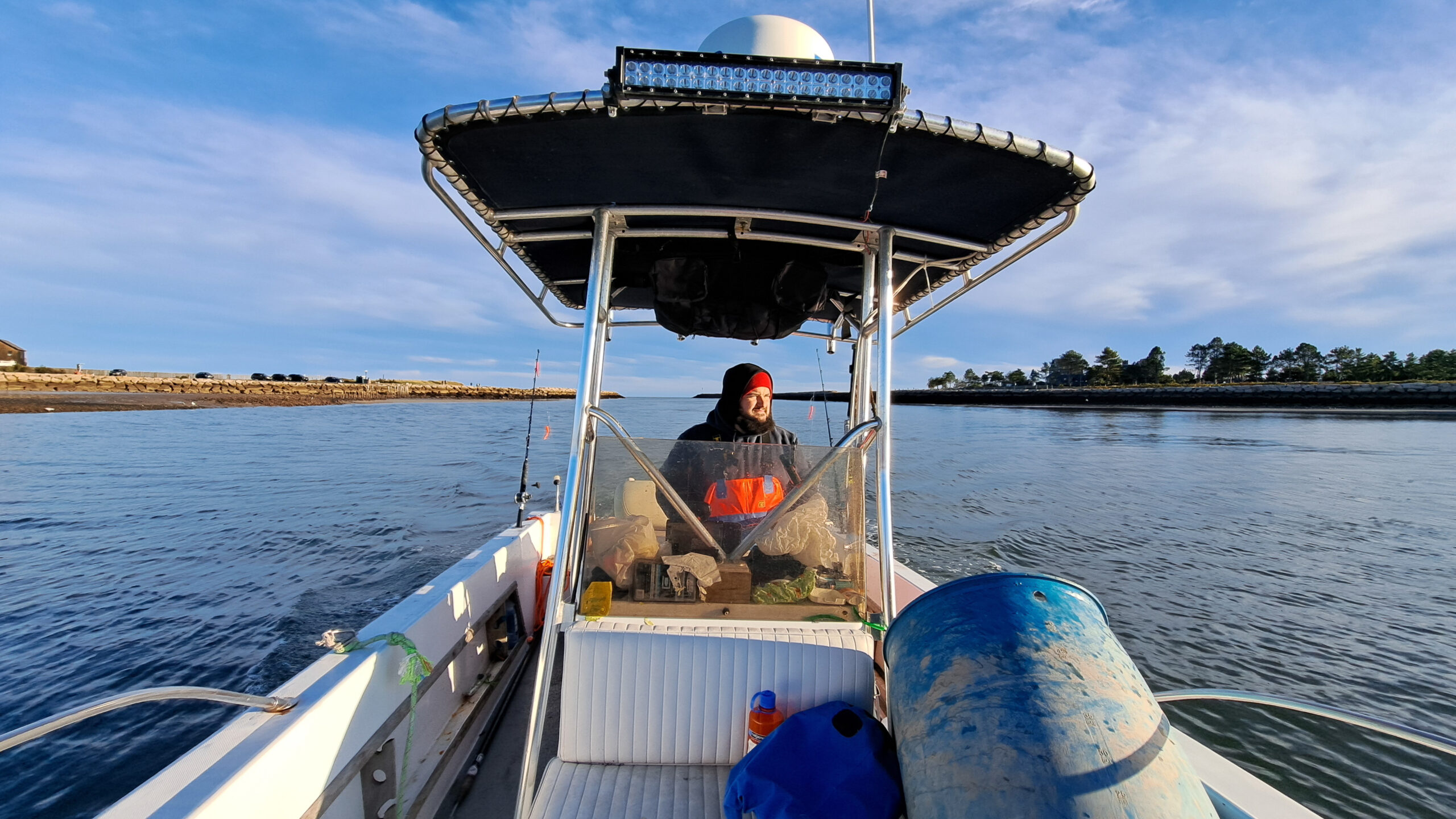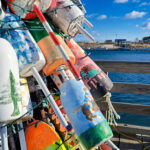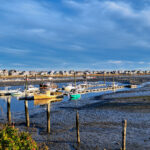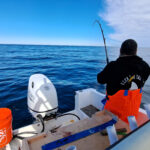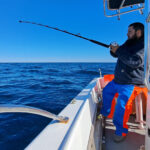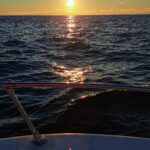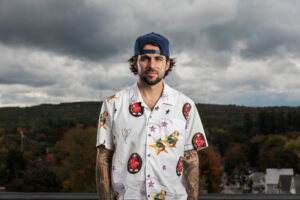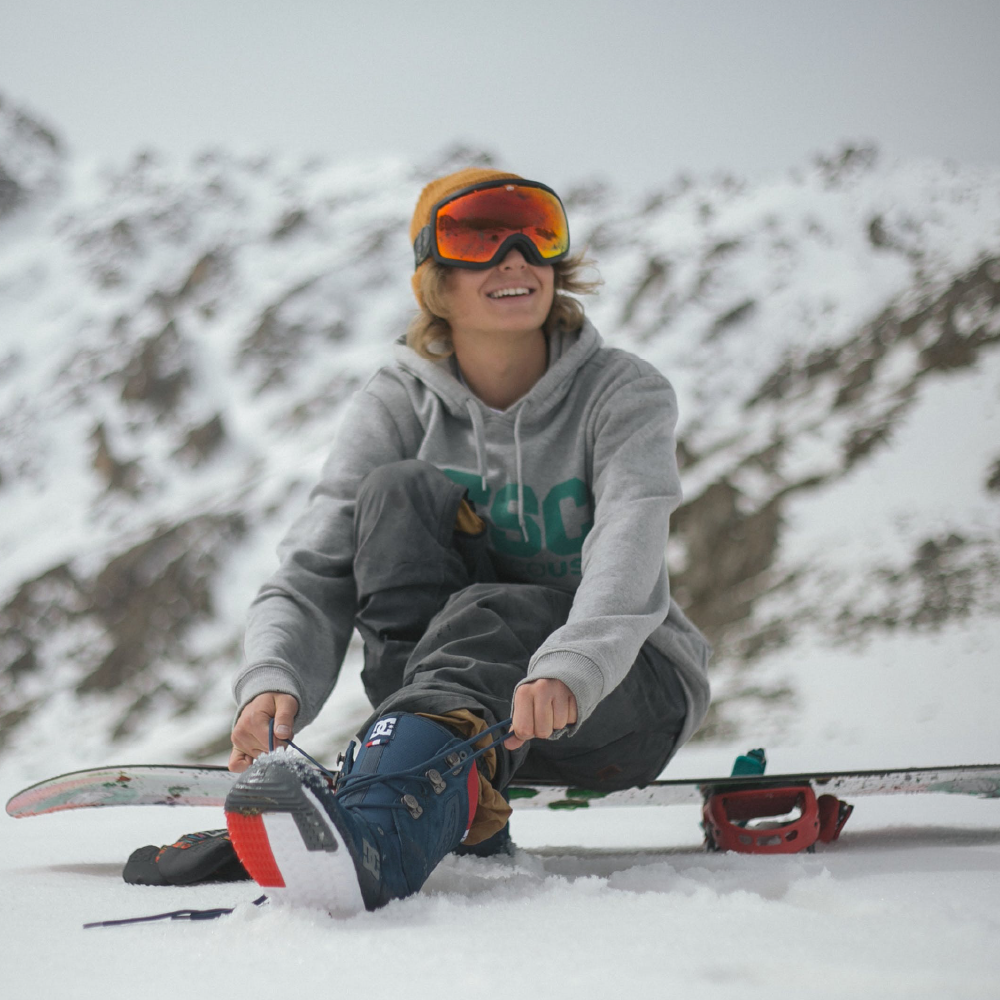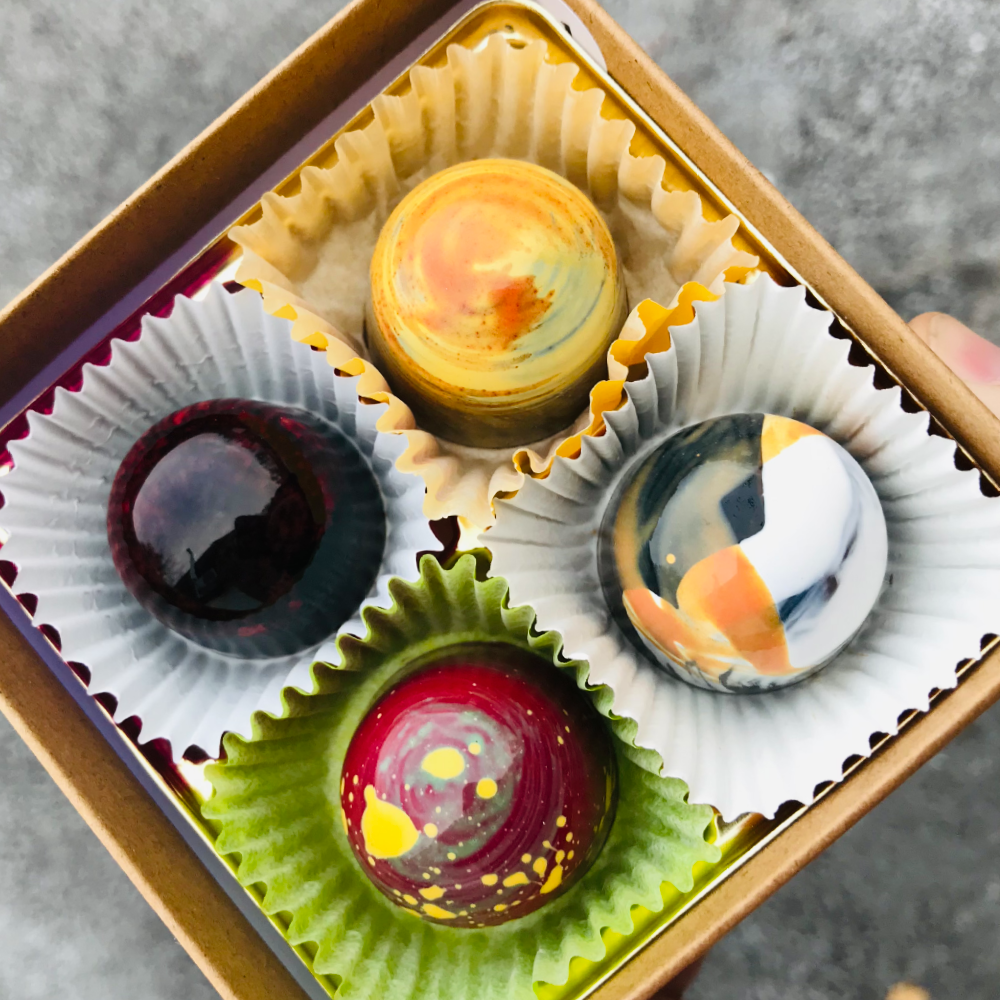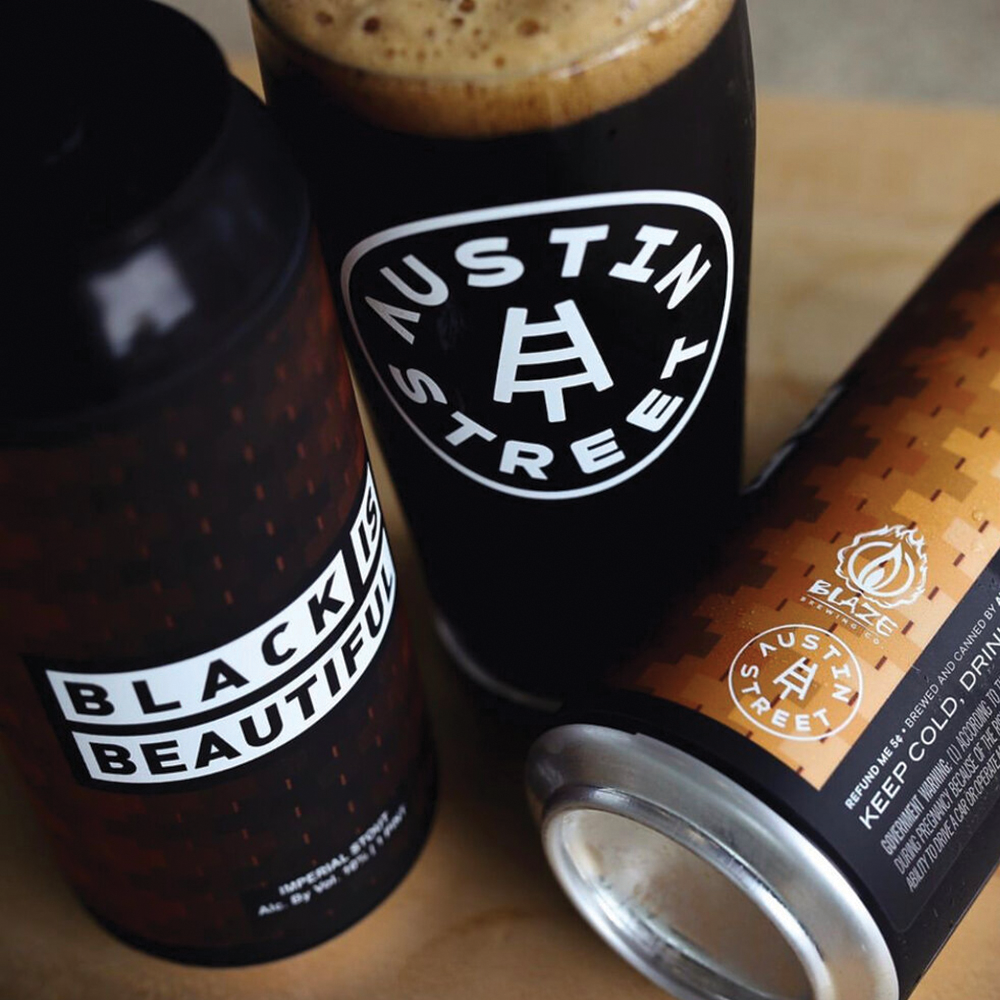he sign reads, “Working Waterfront Parking Only.”
“This must be the place,” I think to myself, the only one here on a quiet late autumn morning. It’s still dark out — Orion shines above me, an early ambassador of wintertime — and I know there won’t be many more trips out on the water as the fishing season draws to a close. A classic lobster buoy tree stands at one end of the pier, shimmering in the moonlight reflecting off of Wells Harbor. My mind wanders to the generations of fishers and boats who’ve come and gone, who’ve watched the same stars glinting off the same tide, a unique and quintessentially Maine scene. I’m awoken from my early-morning daydream by a flash on the frosted railing, cast from the headlights of the pickup truck approaching behind me.
“What’s up man, ready to fish?” asks the same cheery voice I’ve come to know from flower and rosin deliveries. Out of the truck jumps Eric Sprague, the sturdy and bearded man-behind-the-brand at Elm Cultivation, a small-batch medical cannabis company out of Wells. He’s a guy who seems to be at home among the gently swaying fishing boats as he unpacks the trappings of a day on the waves: gas cans, coolers, waterproof gear, rods outfitted with rigs, snoods, and hooks, and, lastly, an enormous plastic tub, sloshing with ice. “We filling this thing today?” I ask, slapping the lid of the tub and sizing up the 1975 Grady White Hatteras, wondering where everything will fit. “That’s the plan” Eric replies, as we each grab an end and shuffle down the ramp with it.
The 140 horsepower Suzuki motor rumbles to life and we leave the sleepy dock, past boats and shoreline cottages and the long jetty leading out of the harbor, out into the open ocean. The dockside lampposts are soon far astern, and the only lights to be seen are the mellow full moon sinking toward the horizon behind us and a blazing white headlight peering out into the dark ahead, occasionally illuminating an icy splash of seawater. We are on our way out to Platts Bank, a bumpy 40-mile ride, and it’s going to take a little while.
So, who is Eric, is he a fisherman who grows, or a grower who fishes? “That’s a tough question,” he says, adjusting our course in the dim glow of the navigation system. “Fishing will always be my first love, but I spend an equal amount of time growing as I do on the water.” He’s been cultivating since 2019, honing his growing skills and developing a taste for legacy strains, particularly those with funky and unique terps that aren’t readily found in today’s market. “They’re nostalgic to me,” he says. “I really love the effects from these strains. A lot of smokers never got to truly experience these terps.”
The autumn harvests are cut and headed for processing, leaving Eric’s sights set on the seeds of springtime. “I’ve got some The Church from Buds by Bissel, some Fondue Cheese from Little Lake Valley. I’ve got Vietnamese Landrace crossed with Lemon Skunk, also some Cindy 99, remember old school Cindy 99?” He seems to have a penchant for the pungent as he lists off his coming crop. “There’s a lot of cheese — Kosher Cheese, Papaya Cheese, three or four others, almost 400 seeds.” Most of it will end up as the small batch live hash rosin he’s become known for, a product uniquely suited to Eric’s one-man operation. “It gives you transparency in what you’re producing,” he says of his single-source Afghan Cheese, “it gives you total control and allows you to do smaller washes.”
Before long, the sunrise begins painting the sky with streaks of red and gold while the moon melts into our wake. The profound coincidence distracts me from noticing the long line of boats dotting the horizon, a tuna fleet hunting the deeper waters further offshore. They’ve been at it for hours already, overnighting in their cabins, a feature this modest craft can’t boast. Still, she’s a proud vessel — the first of her line with a center console, just enough to hide from the wind and spray.
I briefly recall something about “red skies in morning, sailor take warning,” when Eric, spying the tuna fleet, explains to me just how useful those enclosed cabins can be. “It was like four in the afternoon, we got about 12 miles offshore and you could see it — as far north and south you could see it coming, just this wall of water.” He continues: “As soon as it hit, it went to like five footers, it was the nastiest ride home and we’re all huddled up inside,” he imitates the terrified noises they made and breaks off into the laughter of memory, “and it’s raining sideways, coming through every crack and crevice in the pilot house. It was really gnarly.”
Today seems much calmer than that, despite the advice offered by an ominous nursery rhyme. We’ve reached Platts Bank, a double-topped underwater feature that attracts a large number of boats over the course of the day. “What makes it unique,” says Eric, “is we have every species. We get a lot of migrations that come through; we’re the turnaround point for stripers — they come all the way up to us and then work their way back down south, which I think is really cool.” We drop our lines on a school of pollock at about 220 feet and he teaches me about “squidding,” a technique to make our plastic lures look irresistible to our quarry by reeling up 10 feet or so, and then dropping back down.
After a little while, and having not caught many keepers, we begin to drift around. “Maybe it’s the full moon, does that change their habits at all?” I wonder out loud. “I don’t know, it either means really bangin’ fishing, or we just won’t catch anything at all,” replies Eric. The other boats wandering between the various rises and ledges on the navigation display seem to be faring no better, each one angling for the best spots on Platts.
When asked if the fishing boats out here tend to get along, he draws a stark contrast between the fishing and growing communities. “When we [growers] have a problem, we come together and we fight, that’s why our regulations have stayed the same way they are,” he explains. “But with fishing everybody argues with everybody, and nobody can come to a compromise on anything — the charter captains hate the commercial boats, the commercial guys hate the charter guys, everybody hates the long liners because they’re just taking everything, or the harpoon guys — guys, just get along! We all just have to sit down at the table and come to a consensus and work together.”
Still, Eric is up before dawn to fish these revered waters. What is it that keeps drawing him out here? “I think it’s the history, I think it’s the people. Most of these fishing families are four to seven generations, there’s seventh generation lobstermen out here,” he says, gesturing broadly at the lobster buoys scattered around us, bobbing among the whitecaps. The wind is beginning to pick up, and a long line of heavy cloud cover is blowing toward us from the east, riding a weather front and scattering the distant tuna fleet.
We turn west back toward the shore, riding with the wind on our 40-mile return trip, only a handful of fish in the once-promising tub. That’s just how it is, I suppose, as the Maine fisheries try to navigate the pressures exerted by not only the changing market, but also the all-encompassing effects of climate change and the resultant shifts in sea life migration patterns. The snowy peak of Mount Washington rises out of the sea as we approach the shore, then the jetties of Wells Harbor and those same sleepy cottages lining the dockside, the sun in our eyes as we pull alongside the dock.
So, what happens beyond the shoreline, do the skillsets and resources translate into cultivation practices? “Absolutely,” Eric says, pulling the tub onto the pier and processing our humble haul into fresh filets. Nothing is wasted, and the remains will be further broken down through a fermentation process into nutrients for the greenhouse. “It breaks down to create a stable nitrogen; whereas what we usually feed our plants with, it’s easy to over or underfeed, but with this type you can’t really do either,” he tells me while carefully cleaning the workstation.
“So, it’s like a little bit of the Maine fisheries are there in your harvests?” I ask, gazing back out over the water. “Exactly.”
John Buchan once said, “The charm of fishing is that it is the pursuit of what is elusive but attainable, a perpetual series of occasions for hope.” The sun sets behind me and I begin to grasp a wisp that elusive, attainable feeling — a feeling that the fisheries of the future, the strains and terpenes of the past, and all of Maine’s beloved homegrown industries are in the hands of a mindful and capable new generation — an occasion for hope, indeed.

